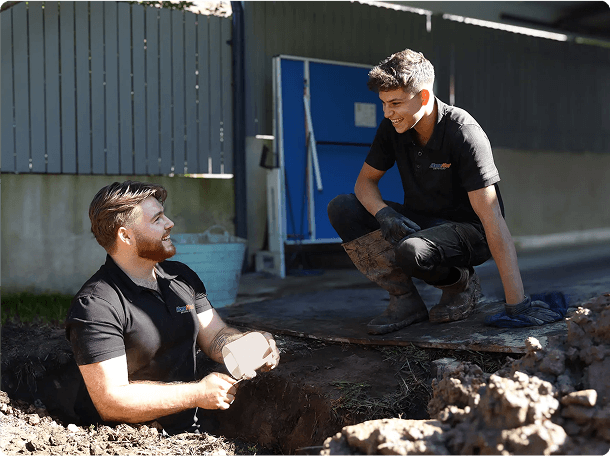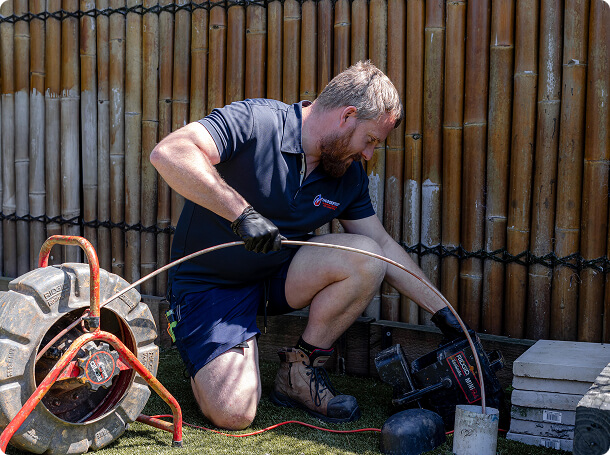Blocked Drains and Sewage Overflow: What Every Melbourne Homeowner Should Know

A Sewage Overflow Job I’ll Never Forget in Malvern East
One of the more memorable blocked drain jobs I’ve done recently was in Malvern East. When we arrived, sewage was overflowing from the relief gully. That’s already bad-but the customer’s dog was eating it. Yep, eating the sewage. We were standing in the backyard watching this happen while the owner casually mentioned the issue had been going on for five or six days. That poor dog had been out there snacking on it the whole time, then going back inside and licking the kids’ faces. It was urgent, to say the least.
After a quick inspection and a camera down the line, we discovered a serious blockage. We quoted the job-around $25,000 and got started that same afternoon. Within three days, we’d excavated, repaired about 10 metres of pipe, backfilled the trench, and had the site inspected and certified. The customer was relieved, the dog probably lost some weight, and the household was safe again.
What Goes Into a Sewage Overflow Drain Repair Like That?
Day one starts with diagnostics. Our service technician will camera the line and present the customer with repair options based on urgency and budget. Once approved, we dispatch our install team who grab all the equipment such as excavators, safety gear, trenching supports, and head to site.
Excavation starts immediately. Day two is about exposing the damaged sections and replacing them. Day three is for inspections, compliance sign-off, and backfilling. In Victoria, all sewer repairs must be certified by the VBA (Victorian Building Authority). That means proper slope, depth, backfill material, it all has to meet code.
You can’t cut corners here. If you do, and you’re caught, you’ll get fined or worse. And that’s why some plumbers underquote and do substandard work, they skip the permits and the paperwork.
A Cautionary Sewage Overflow Tale From Werribee
Another job that stands out was in Werribee. The homeowners were dealing with recurring blockages and had been calling out different plumbers every few weeks to jet the line-$800 a pop, over and over.
Eventually, they called us. We ran our camera and found the issue: the entire drain had been laid incorrectly by a cheaper plumber. It had the wrong fall-the sewage was flowing back toward the house instead of toward the street. The pipe had collapsed.
We ended up quoting $30,000 to dig it up and redo everything. Three days, a full crew, safety equipment, trench shoring-the works. That customer had paid $8,000 for the original (incorrect) install, another $4,000 in jetting services, and still had to pay us to fix the whole thing.
Tree Roots: The Hidden Menace Behind Sewage Overflow
A huge percentage of blocked drains-especially in older Melbourne suburbs-are caused by tree roots. In dry spells, roots search for nutrients and crack into clay pipes. Over time, they create a mess of blockages. Jetting will clear the roots temporarily, but if you don’t reline the pipe or repair it, they’ll grow back stronger and faster.
We’ve had customers call with gurgling drains, slow-flushing toilets, and sewage smells. Nine out of ten times, that’s your early warning sign of tree roots inside the sewer line.
If we catch it early, we can reline the pipe-essentially build a new pipe inside the old one. That’s way cheaper and less disruptive than digging six metres into the ground.
Relining vs. Excavation
Relining costs anywhere from $4,000 to $10,000 depending on the length of pipe. Excavating and replacing a collapsed line can easily run $30,000 to $50,000. If your drains are gurgling, backing up, or emitting odours, call us early. The sooner we act, the less you’ll spend. I
f you’ve got a blocked drain, don’t keep jetting it and hoping for the best. Let’s camera the line, figure out the real cause, and solve the problem for good.



